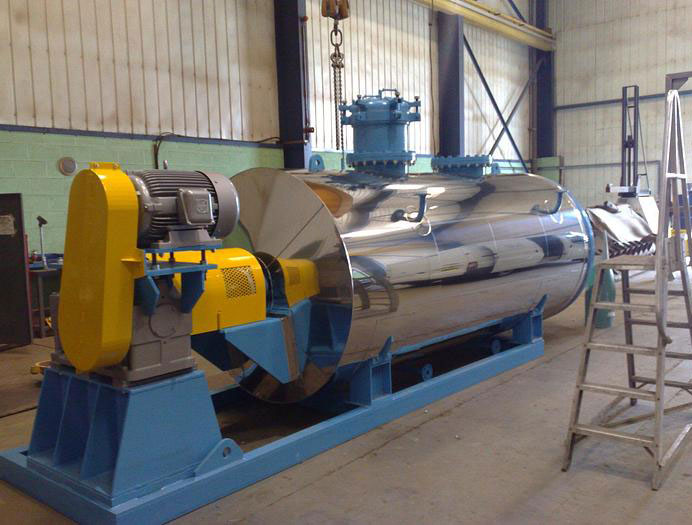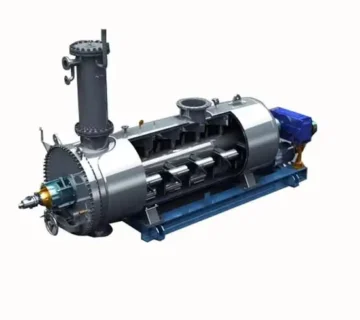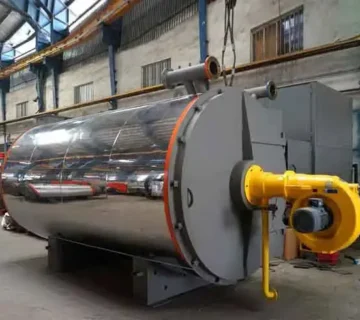Best Practices for Slaughterhouse Waste Processing Using Rendering Cookers
Introduction: Efficient waste management in the meat processing industry is critical for environmental sustainability and resource optimization. One of the most advanced solutions for handling slaughterhouse waste is the use of rendering cookers. These industrial machines turn slaughterhouse by-products such as fat, bones, and non-edible tissue into valuable products like tallow, meat, and bone meal. This article focuses on the best practices for processing slaughterhouse waste using rendering cookers, with an emphasis on optimizing both environmental and economic outcomes.

1. Pre-Treatment of Waste: Before waste can be processed in a rendering cooker, proper pre-treatment steps should be followed to ensure that the machinery runs efficiently and the final products meet quality standards.
- Separation of Different Waste Types: Separate different types of waste based on composition. Fatty tissues, bones, and other by-products should be sorted to ensure that each batch is optimized for its intended end-product.
- Minimizing Moisture Content: High moisture levels can reduce the efficiency of rendering cookers. Dehydration or pre-drying the waste can improve the process.
2. Choosing the Right Rendering Cooker: The market offers various types of rendering cookers, and choosing the right one is critical for maximizing output.
- Batch vs. Continuous Cookers: Batch cookers are ideal for small-scale operations, while continuous cookers are more suitable for large-scale, industrial-level processing. Continuous cookers offer greater efficiency and are more energy-efficient.
- Capacity and Size: Ensure the cooker’s capacity matches the volume of waste generated in the slaughterhouse. This avoids overloading, which can reduce efficiency and lifespan of the equipment.
- Energy Efficiency: Opt for models that come with energy-saving features, reducing operating costs over time.

3. Rendering Process: Once the waste has been pre-treated and placed into the rendering cooker, the actual cooking process begins. Rendering cookers work by heating the material to break down complex organic structures into simpler, usable components.
- Optimal Temperature Control: The temperature during the rendering process should be carefully monitored. Typically, the material is cooked between 120°C to 140°C. Too high temperatures can degrade the quality of the final product, while too low can result in incomplete processing.
- Pressure Maintenance: Proper pressure control during cooking ensures faster breakdown of tissue and fat, resulting in more efficient fat extraction and protein preservation.
4. Environmental Benefits: One of the primary reasons to invest in rendering cookers is their ability to reduce the environmental impact of slaughterhouse waste. Best practices in environmental sustainability include:
- Waste-to-Resource Conversion: Rendering cookers transform waste into valuable by-products like meat and bone meal, which can be used in animal feed, and tallow, which is useful for the cosmetic and biodiesel industries.
- Minimizing Landfill Use: By efficiently processing slaughterhouse waste, rendering cookers prevent these materials from being sent to landfills, where they could contribute to greenhouse gas emissions.
- Odor Control Systems: Modern rendering cookers come with odor control systems that trap and neutralize unpleasant smells, which is crucial for maintaining community relations.
5. Maximizing Product Quality: The end-products of the rendering process—mainly fat and protein-based meals—must meet industry standards to be sellable. Therefore, it is essential to implement the following best practices:
- Consistent Quality Checks: Perform routine tests to ensure that the protein content, moisture levels, and fat purity meet both legal requirements and customer specifications.
- Cleaning and Maintenance: Regular cleaning of the cooker prevents the buildup of residue that could affect product quality. Moreover, routine maintenance ensures that the equipment functions at optimal capacity.
- By-Product Marketing: The processed by-products have significant commercial value. Marketing them effectively can increase profits and offset the costs of waste processing. Meat and bone meal, for instance, is in high demand in the livestock feed industry, while tallow can be sold to biodiesel producers.
6. Safety Considerations: Operating rendering cookers can be hazardous due to the high temperatures and pressures involved. Follow these safety guidelines to ensure smooth and safe operations:
- Operator Training: Ensure that all staff members operating the rendering cooker are well-trained in its functionality, as well as safety protocols.
- Safety Valves and Emergency Shutoff: Rendering cookers should be equipped with safety valves and emergency shutoff systems to prevent accidents.
- Proper Ventilation: The facility where the rendering cooker is installed should have sufficient ventilation to dissipate heat and any by-product gases.
7. Economic Advantages: One of the strongest reasons for investing in rendering cookers is the potential for cost savings and additional revenue generation.
- Waste Reduction: Rendering significantly reduces the volume of waste that needs to be disposed of, lowering landfill costs or waste disposal fees.
- Revenue from By-Products: As mentioned earlier, the by-products of the rendering process can be sold to various industries, from agriculture to energy. Meat and bone meal, for example, can be a profitable commodity.
- Energy Savings: Modern rendering cookers are designed to minimize energy consumption, providing long-term savings on operational costs.

Conclusion: Investing in rendering cookers for processing slaughterhouse waste offers multiple advantages, from environmental benefits to significant economic returns. Following the best practices outlined above ensures that businesses can operate sustainably while maximizing their profits. Whether you’re looking to reduce waste, lower operational costs, or create new revenue streams, rendering cookers are a must-have for any large-scale meat processing facility.



